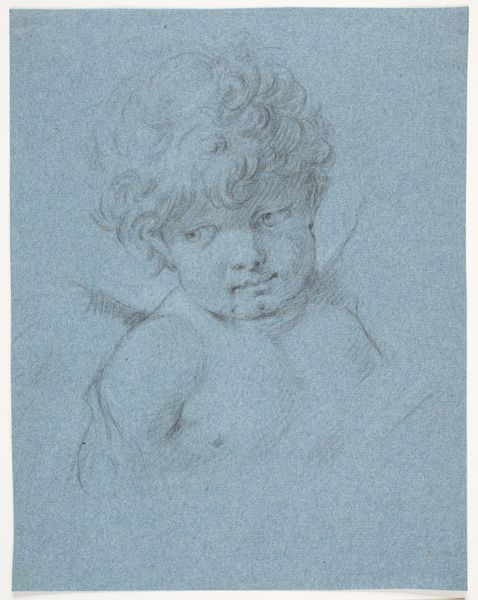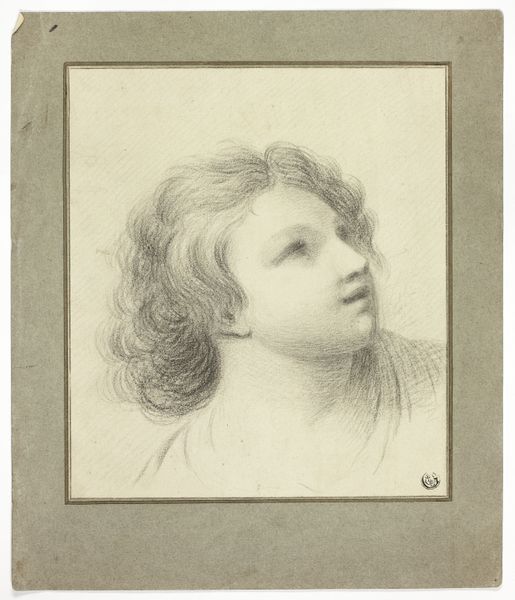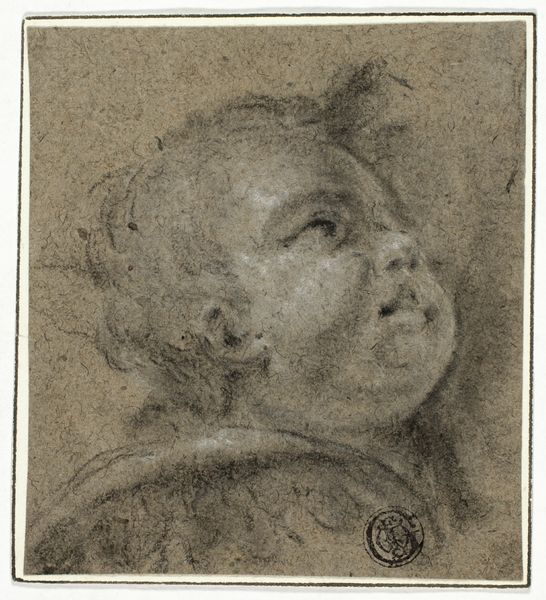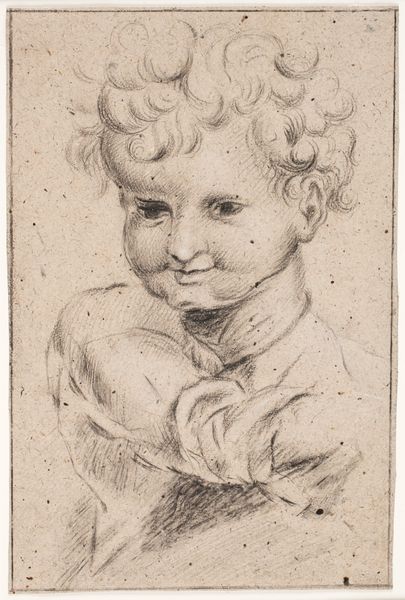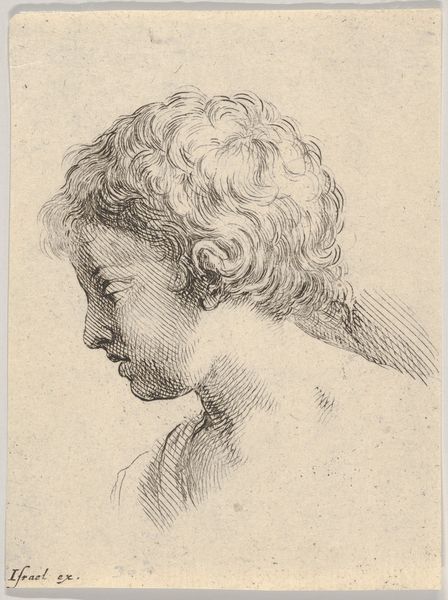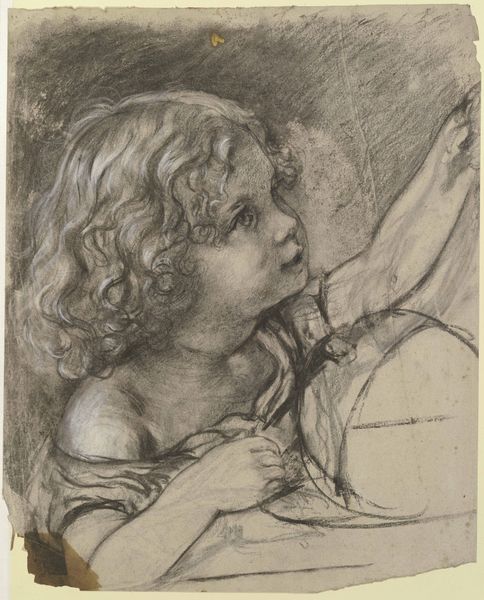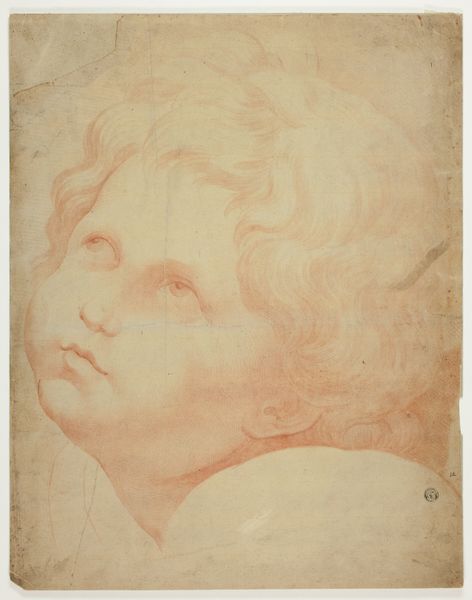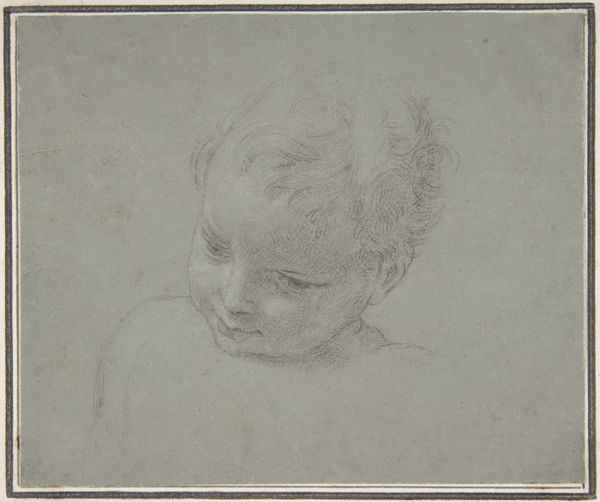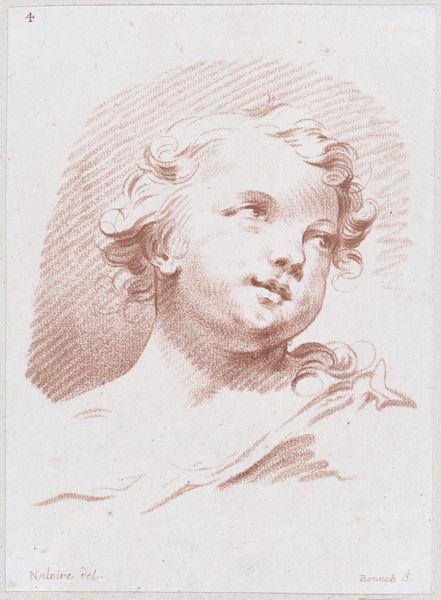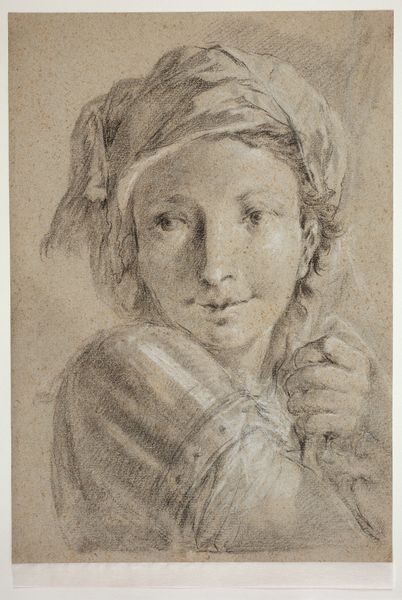
drawing, paper, chalk
#
portrait
#
drawing
#
baroque
#
figuration
#
paper
#
chalk
#
14_17th-century
Copyright: Public Domain
Curator: This arresting study, rendered in chalk on paper, is entitled "Bust of an Angel." The piece is attributed to Ludovico Carracci and resides here at the Städel Museum. Editor: It's striking. There's a softness to the chalk, especially in the curls of hair, but the angel's expression is almost severe. Not at all what one expects. Curator: Indeed. Carracci's artistic circle heavily influenced painting styles of the Italian Baroque, and his commitment to art as moral instruction surely permeates even preparatory sketches like this. Note how this study suggests the formal Baroque style without the traditional subject matter that promotes institutional and theological standards. Editor: I'm drawn to how Carracci uses light. The highlights on the cheek and shoulder give the figure a remarkable presence, almost pushing him forward out of the grey ground. Is this indicative of the art and aesthetics of the period? Curator: Yes, certainly. The drama of the Baroque found its voice, in part, through the strategic implementation of chiaroscuro, the contrast between light and shadow. Also note that such studies of putti – cherubic figures, like this one – were often used in preparation for larger altarpieces. He may be attempting to instill ideals of a sacred figure through naturalistic interpretation. Editor: Interesting. So it's more than just a study in light and form? Curator: Absolutely. Carracci and his contemporaries saw art as a tool for both aesthetic delight and moral and societal uplift, reflecting the intense religious and political climate of their era. It could be argued that the role of these artists was more didactic than creative, used for reinforcing ideological precepts rather than aesthetic ones. Editor: It makes you wonder what larger work this angel might have appeared in. It seems strange, almost satirical, given the angel’s apparent youth, how fraught that small expression seems to be. Curator: An important distinction, as it showcases how the social function of such artworks often transcends time, with their messages molded and tested by each generation’s worldview. Editor: This certainly brings a different angle, shall we say, to Baroque art and aesthetics. Curator: Quite so, broadening our experience beyond its surface appeal, offering valuable cultural lessons, one might add!
Comments
No comments
Be the first to comment and join the conversation on the ultimate creative platform.

